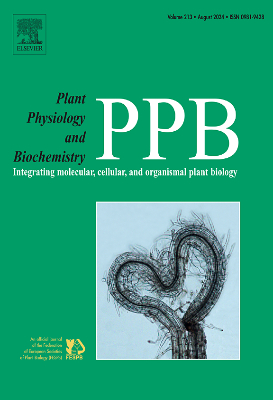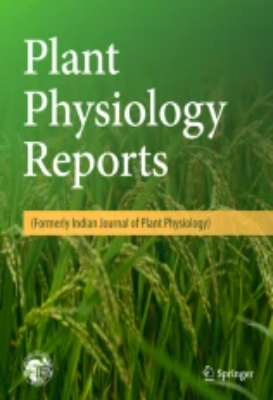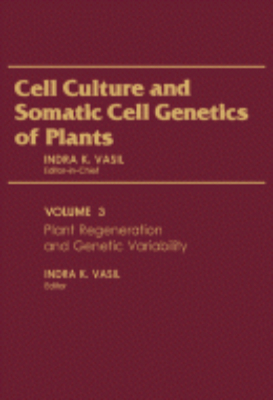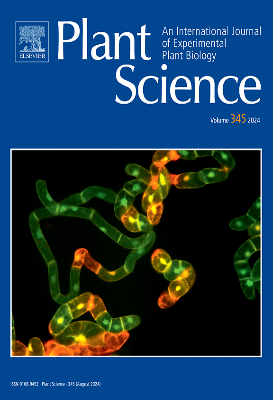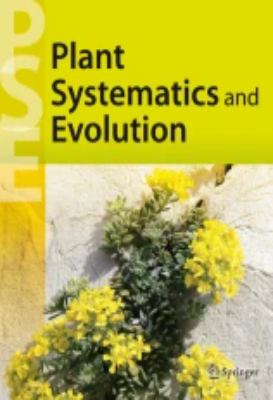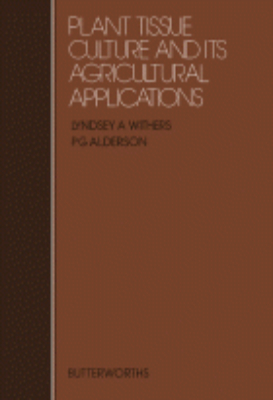E-Resources
Plant Peroxisomes
Plant Peroxisomes deals with the biogenesis of plant peroxisomes and its relevance to the proposed model for peroxisome biogenesis in germinated seeds. The book is divided into seven chapters that discuss the history, cytochemistry, morphology, properties, isolation, metabolism, enzymology, and ontogeny of plant peroxisomes. The book first explains how advances in electron microscopy and cell fractionation studies have led to the detection of peroxisome. The subsequent chapters discuss the types and metabolic functions of plant peroxisomes and the cytochemical procedures for establishing the localization of specific enzymes and for analyzing peroxisome distribution in nonflowering plants, algae, and fungi. A chapter presents methods of peroxisome isolation from various tissues and the physical and chemical properties of the isolated organelles. Considerable chapters are devoted to the metabolic functions, enzymatic activities, development of their form, and biochemistry of peroxisomes. Several key enzymes of the glycolate pathway of photorespiration found in leaf peroxisomes are presented. A discussion on the physiology of plant peroxisomes is provided. This book will be of value to professional scientists and graduate students concerned with plant metabolism and development.
Plant Pests and their Control
Plant Pests and their Control, Revised Edition discusses the concepts involved in pest management, along with its application, constraints, and opportunities. This book is comprised of 13 chapters that cover topics relevant in understanding the basis and practice of pest management. The first six chapters deal with the various aspects of entomology. These chapters cover the importance of insects; the physiological properties of insects; and reproduction and life cycle. The next chapter covers the non-insect pests. Chapter 8 discusses the relationship between insects and plants, while Chapter 9 covers the mortality factors of insect, such as predators, parasites, and pathogens. The next chapter presents the ecological background of pest control. The remaining three chapters discuss pest management itself. This text will be of great use to agriculturists, horticulturalists, and pest control professionals. Household owners dealing with residential pest infestation will also find this book a great source of information.
Plant Physiology: 1969
Plant Physiology: A Treatise, Volume VB: Analysis of Growth: The Responses of Cells and Tissues in Culture deals with the innate capacities for growth that reside in mature organs, tissues, and cells of higher plants. The book examines the various ways, normal and abnormal, in which surviving organs, tissues, or cells from plants may grow, metabolize, and develop. The text will be of value to botanists, horticulturists, and biologists.
Plant Physiology: 1971
Plant Physiology: A Treatise, Volume VIA: Physiology of Development: Plants and Their Reproduction explores the various problems of development and reproduction that arise as plants, responsive to environmental stimuli, develop a vegetative plant body and produce seeds and fruits or organs of perennation. This book considers the morphological aspects of plant growth and development as well as the growth and reproduction of fungi, physiological aspects of vegetative reproduction and flowering, and perennation and dormancy. This volume is organized into four chapters and begins with an overview of growth and development, with reference to organization and patterns of development in vascular plants and the initiation and development of plants. The discussion then shifts to vegetative, sexual, and asexual reproduction in fungi, along with heterokaryosis and morphogenesis. The next chapter explores reproduction in plant biology, focusing on vegetative and sexual reproduction, sex determination, and photoperiodism. This book concludes by considering the physiological mechanisms underlying the production of organs of perennation and the establishment of dormancy. This text will be of value both to graduate students and to established investigators with specific interest in plant physiology.
Plant Physiology: Volume VIB
Plant Physiology: A Treatise, Volume VIB: Physiology of Development: The Hormones focuses on the history and status of the hormone concept in plant physiology. This book considers the responses of plant cells, tissues, and organs to regulatory substances that may be naturally occurring, exogenously applied, or even synthetic in their origin. References to auxins and other plant hormones, or regulatory substances, are made throughout at levels that extend from cell division and cell enlargement, cell physiology and metabolism, to morphogenesis and reproduction. This volume begins with an introduction to naturally occurring plant hormones ranging from auxins to gibberellins, cytokinins, and ethylene. This book also looks at some of the clearest and best studied cases where growth is controlled by interactions between two or more hormones. The concept of hormone action in plants is discussed, along with methods of auxin bioassay and the nature and metabolism of indole auxins. The physiological actions, transport, and mode of action of auxins are described, followed by an overview of naturally occurring growth inhibitors such as phenols, flavonoids, and abscisic acid. This book is intended for researchers, students, and specialists in related fields who wish to gain insight on the concepts and research trends in plant hormones.
Plant Physiology: Volume VIC
Plant Physiology: A Treatise, Volume VIC: Physiology of Development: From Seeds to Sexuality deals with the physiology of development in angiosperms, from seeds to sexuality. This book treats germination and cell division, growth, and development from a single point of view, emphasizing the problems of early development in flowering plants. This volume begins with an introduction to the process of germination, focusing on the dispersal unit that emerges at some stage in the life cycle of plants, seed viability and dormancy, and properties of seed components. The following chapters discuss cell division in higher plants, the importance of cell expansion for the growth of the whole plant, and the sexuality of angiosperms. Topics such as meiosis in the anther and the ovule, male spores and gametophytes, and the embryo sac are discussed in detail. This book concludes with problems that arise, and points of view that emerge, as development is considered in the light of genetics. This book is a valuable resource for researchers, students, and specialists in related fields who wish to gain insights on the concepts and research trends in the physiology of development in flowering plants.
Plant Physiology: Volumn IX
Plant Physiology: A Treatise, Volume IX: Water and Solutes in Plants explores problems associated with water and solutes of plants as they grow. This book considers water relations of plant cells, along with transpiration and water balance, the physiology of stomata, ion uptake by roots from the soil, and salt relations of plants. This volume is organized into seven chapters and begins with an introduction to the water potential terminology used by plant physiologists in describing the water relations of plant communities, individual plants and their organs, and plant cells. An account of the elastic properties and hydraulic conductivity of plant cell walls is provided. The following chapters focus on the soil-plant-atmosphere continuum, water uptake and movement through plants, the effects of water deficit on plant development and other processes, and the mechanics of stomatal functioning. The book also introduces the reader to salt relations of plant cells, tissues, and roots as well as long-distance transport in the phloem, and then concludes by discussing the solute composition of cells during development. This book is a valuable resource for teachers, research workers, and students with specific interest in plant physiology.
Plant Physiology: Volumn VIII
Plant Physiology: A Treatise, Volume VIII: Nitrogen Metabolism focuses on the physiological aspects of nitrogen metabolism in plants. This book considers the descriptive biochemistry by which nitrogen compounds and their reactions are recognized; the way the feasible reactions are assembled into metabolic pathways and cycles that give meaningful purpose and direction to the course of metabolism; and the ongoing fate of nitrogen compounds in relation to ontogeny, growth, and development. This volume is organized into four chapters and begins with an introduction to developments in basic and applied biological nitrogen fixation, focusing on the agriculturally important mechanisms by which atmospheric nitrogen is converted to plant protein. The biology and biochemistry of nitrogen-fixing associations and their practical application in agriculture are discussed, along with nitrogen metabolism in the context of various actual situations in which cells divide and grow and specific plants develop, mature, and reproduce. The next chapter deals with the metabolism and turnover of proteins, citing specific proteins (the enzymes ribulosebisphosphate carboxylase and nitrate reductase and seed protein) as the type cases to illustrate the fate of special proteins through their formation and turnover. The mechanisms and biological settings of protein degradation, as distinct from breakdown during protein turnover, are also covered in detail. This book is intended for teachers, research workers, and students with specific interest in plant physiology.
Plant Physiology: Volumn X
Plant Physiology: A Treatise, Volume X: Growth and Development explores the physiology of plant growth and development, considering the morphogenesis and morphogenetic systems, dormancy, environmental cues in plant growth and development, plant senescence, the role of hormones in growth regulation, cell division, and growth and development in space. This volume is organized into eight chapters and begins with an introduction to morphogenesis as a developmental phenotype, emphasizing the cell and the shoot. The next chapters cover events in the life of the plant, reflecting the importance of the whole plant concept to the subject, and the ways in which these events are controlled and integrated into environmental signals and events. An experimental approach to a model system for dormancy is described, and then the discussion shifts to senescence and death of plants as aspects of plant development. This volume also presents a clear and illuminating overview of the major plant growth regulators and their modes of action. This book also introduces the reader to cell division and its effect on most major developmental events after fertilization, along with the genetic analysis of development and its control by genes. The final chapter focuses on the integration of plant growth studies with the technology of space travel, which permits analysis of plant behavior in the complete absence of gravity. This book is intended for researchers, students, and specialists in related fields who wish to gain insight on the concepts and research trends in plant growth and development.
Plant Pigments Flavors and Textures
Plant Pigments, Flavors and Textures: The Chemistry and Biochemistry of Selected Compounds focuses on the chemistry and biochemistry of compounds responsible for the pigments, flavors, and textures of some fruits and vegetables. Since much of the information presented is scattered in the scientific literature, an attempt has been made to integrate the material into a concise yet comprehensive text. The book is organized into three sections that deal separately with pigments, flavors, and textures. Section I discusses pigment degradation during processing and storage as well as attempts to prevent color deterioration. Section II examines the biogenesis of several groups of compounds that contribute to flavor. Section III deals with the chemistry and biochemistry of plant cell wall components and their relation to texture. This book will be useful to food scientists as well as those interested in foods. The extensive references cited in the text will enable the reader to pursue any of the topics discussed, in more depth.
Plant Polymeric Carbohydrates
The International Symposium on Plant Polymeric Carbohydrates, which was held as a satellite symposium of the International Carbohydrate Meeting, has become a symposium in its own right, bringing together an number of experts to exchange knowledge. This has been achieved by placing the emphasis on specific aspects of carbohydrate research in the selection and organization of the items on the programme. The aim of the symposium was to present the latest research in sub-branches of the biosynthesis and structure of polymeric carbohydrates, their rheological properties, both as pure substances and in complex bonds with other natural materials, their nutritional importance with respect to their physicochemical and nutritive properties, and their industrial applications in food and non-food.
Plant Proteins
Plant Proteins is a compendium of papers discussing, in general, plant proteins as materials for human foods, and in particular, the properties, biosynthesis, deposition of reserves in seeds, undesirable factors, production, and nutritional aspects of plant proteins in the food industry. Some papers review the properties and biosynthesis of plant proteins, the synthesis of chloroplast proteins, and legume seed proteins. Other papers discuss the development of protein reserves in seeds, as well as the toxicity and antagonistic actions in relation to amino acid and protein synthesis. One paper examines the world supply and demand for sources of protein from three plant sources, namely cereals, oilseeds, and legumes. Another paper discusses the capabilities of certain species of micro-organisms to synthesize from a few simple raw materials all the main components needed in the diet of a human or a farm animal. One paper notes that the acceptance of plant protein foods in society depends on their presentation, flavor, texture, appearance, identity, and product name. This compendium will benefit agronomists, agriculturists, biochemists, microbiologists, nutritionists, botanists, chemists, economists, food scientists, physicists and plant breeders.
Plant Resource Allocation
“Plant Resource Allocation is an exploration of the latest insights into the theory and functioning of plant resource allocation. An international team of physiological ecologists has prepared chapters devoted to the fundamental topics of resource allocation. Key Features. Comprehensive coverage of all aspects of resource allocation in plants. All contributors are leaders in their respective fields”
Plant Resources of Arid and Semiarid Lands
Plant Resources of Arid and Semiarid Lands: A Global Perspective is a collection of papers that evaluates the existing native plant resources in the arid and semiarid regions. The papers deal with the resources found in these arid regions such as food potential, forage, fuel, fiber, medicinal or industrial uses. The book covers the arid regions of Africa, Australia, the Indian subcontinent, Middle East, North America, China, South America, and the USSR. The treatment of these regions includes geographical descriptions such as area, annual precipitation, temperature, humidity, wind ranges or patterns, and seasons. These papers also discuss the effects of topography on water drainage and loss, the basic soil types, holding capacity, water runoffs, and the availability of water (surface and subsurface), The book examines the current and projected growth rates for relevant countries and dry regions in each continent. These papers discuss the economic output from arid lands, the balance of trade, current or developing resources, as well as the prospects of these countries with dry regions. The book also focuses on the types of plants found in these regions whether these are used for food, forage, medicine or for industry. This collection is suitable for environmentalists, ecologists, sociologist, anthropologists, and researchers involved in biological and environmental conservation.
Plant Responses and Control of Water Balance
Water Deficits and Plant Growth, Volume III: Plant Responses and Control of Water Balance focuses on the influence of water deficits on shrinkage of plant tissues, seed germination, reproductive growth, and internal plant responses such as protoplasmic resistance to desiccation, enzymatic activity, nitrogen metabolism, hormonal relations, and mineral nutrition. This book also considers alleviation and control of water deficits in plants. This volume is organized into 10 chapters and begins with an overview of shrinkage and swelling in plant tissues and their biological implications, along with some basic aspects of seed germination and environmental factors affecting germination as well as its relation to soil moisture. The discussion then shifts to the impact of water deficits on growth of fruits at different stages of development, from flowering to fruit ripening, and the ability of the protoplasm to survive a serious reduction in water content (known as protoplasmic resistance). The following chapters explore the effects of water deficits on enzyme activity, nutrient availability, nitrogen metabolism, and hormonal distribution in plants. This book also looks at transpiration in plants and how to reduce it, and then concludes with a chapter on soil water conservation as a problem of management of available water resources in the context of agriculture. This book is a valuable resource for scientists and investigators in fields such as botany, plant pathology, forestry, and agriculture.
Plant Stems
“Stems, of various sizes and shapes, are involved in most of the organic processes and interactions of plants, ranging from support, transport, and storage to development and protection. The stem itself is a crucially important intermediary: it links above- and below ground organs-connecting roots to leaves. An international team of leading researchers vividly illustrate that stems are more than pipes, more than simple connecting and supporting structures; rather stems are critical, anatomically distinct structures of enormous variability. It is, to an unappreciated extent, this variability that underpins both the diversity and the success of plants in myriad ecosystems. Plant Stems will be a valuable resource on form/function relationships for researchers and graduate-level students in ecology, evolutionary biology, physiology, development, genetics, agricultural sciences, and horticulture as they unravel the mechanisms and processes that allow organisms and ecosystems to function. Key Features. Syntheses of structural, physiological, and ecological functions of stems. Multiple viewpoints on how stem structure relates to performance. Highlights of major areas of plant biology long neglected”
Plant Tissue Culture and Its Agricultural Applications
Plant Tissue Culture and Its Agricultural Applications presents the proceedings of the 41st University of Nottingham Easter School in Agricultural Science held in England. The sessions covered in this volume reflect the revolution of tissue culture and its role in the propagation of elite plant material and the development of improved genotypes. This book is organized into four main sections. The first section chronicles the revolution of the plant tissue culture. This includes papers on clonal propagation, morphogenesis, germplasm storage, plant health, and genetic improvement. The core of this volume is covered by the introductory and the final chapters which interrelate the different subjects areas covered by the proceedings and provide a realistic assessment of future research required for the plant tissue culture revolution to come to fruition. This book will be useful to readers interested in understanding the history, evolution, and future of plant tissue culture and its applications in the agricultural sector.
Plant Tissue Culture: 1981
Plant Tissue Culture: Methods and Applications in Agriculture contains the proceedings of a symposium based on the UNESCO training course on Plant Tissue Culture: Methods and Applications in Agriculture, sponsored by UNESCO and held in Campinas, Sao Paulo, Brazil, on November 8-22, 1978. This book contains two major sections encompassing plant tissue culture: Part A, which focuses on methodology, and Part B, which emphasizes the applications. The first chapters present the requirements for a tissue culture facility, and then describe nutrition, media, and characteristics of cultured plant cells and their growth and behavior in vitro, particularly with reference to embryogenesis and organogenesis. Discussions on protoplasts, mutagenesis and in vitro selection, meristem culture, freeze preservation, and cytogenetic techniques complete Part A. In Part B, androgenesis, in vitro fertilization, and embryo culture are discussed. Some chapters follow on the application of in vitro methodology to selected crops. The final chapter deals with the potential of tissue culture in the biosynthesis of secondary products. This text will prove useful to those who must thoroughly plan their research in tackling problems in agriculture that are amenable to the tissue culture approach.
Plant Tissue Culture: 1992
Plant Tissue Culture Techniques and Experiments is a manual that contains laboratory exercises about the demonstration of the methods and different plant materials used in plant tissue culture. It provides an overview on the plant cell culture techniques and plant material options in selecting the explant source. This book starts by discussing the proper setup of a tissue culture laboratory and the selection of the culture medium. It then explains the determination of an explant which is the ultimate goal of the cell culture project. The explant is a piece of plant tissue that is used in tissue culture. Furthermore, the book discusses topics about callus induction, regeneration and morphogenesis process, and haploid plants from anther and pollen culture. The meristem culture for virus-free plants and in vitro propagation for commercial propagation of ornamentals are also explained in this manual. The book also provides topics and exercises on the protoplast isolation and fusion and agrobacterium-mediated transformation of plants. This manual is intended for college students, both graduate and undergraduate, who study chemistry, plant anatomy, and plant physiology.
Plant Tissue Culture: 2013
“Plant Tissue Culture, Third Edition builds on the classroom tested, audience proven manual that has guided users through successful plant culturing A.tumefaciens mediated transformation, infusion technology, the latest information on media components and preparation, and regeneration and morphogenesis along with new exercises and diagrams provide current information and examples. The included experiments demonstrate major concepts and can be conducted with a variety of plant material that are readily available throughout the year. This book provides a diverse learning experience and is appropriate for both university students and plant scientists. Key Features. Provides new exercises demonstrating tobacco leaf infiltration to observe transient expression of proteins and subcellular location of the protein, and information on development of a customized protocol for protoplast isolation for other experimental systems. Includes detailed drawings that complement both introductions and experiments. Guides reader from lab setup to supplies, stock solution and media preparation, explant selection and disinfestations, and experimental observations and measurement. Provides the latest techniques and media information, including A. tumefaciens mediated transformation and infusion technology. Fully updated literature”



